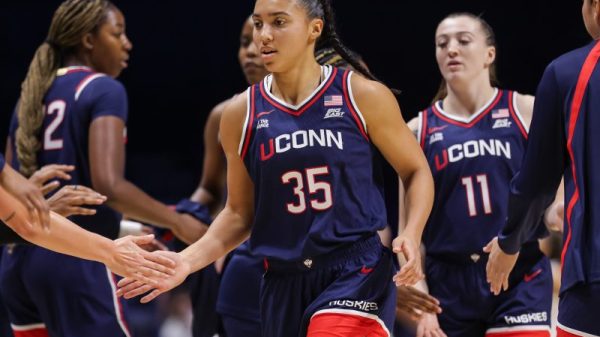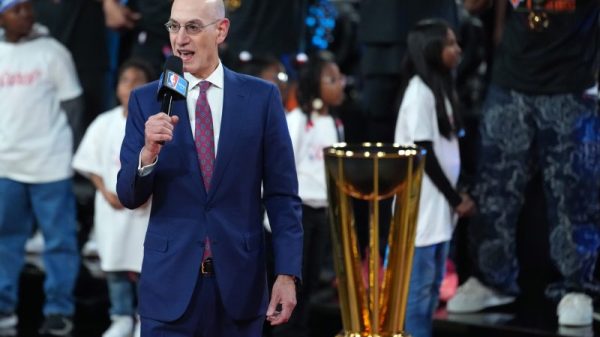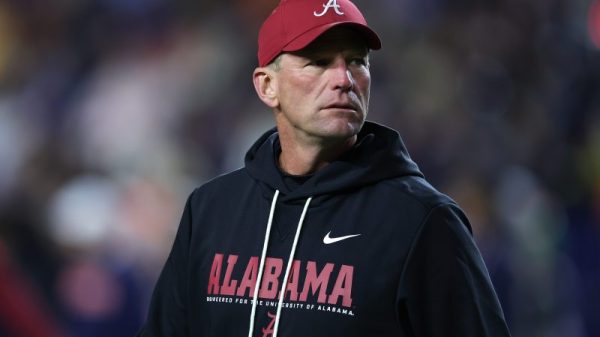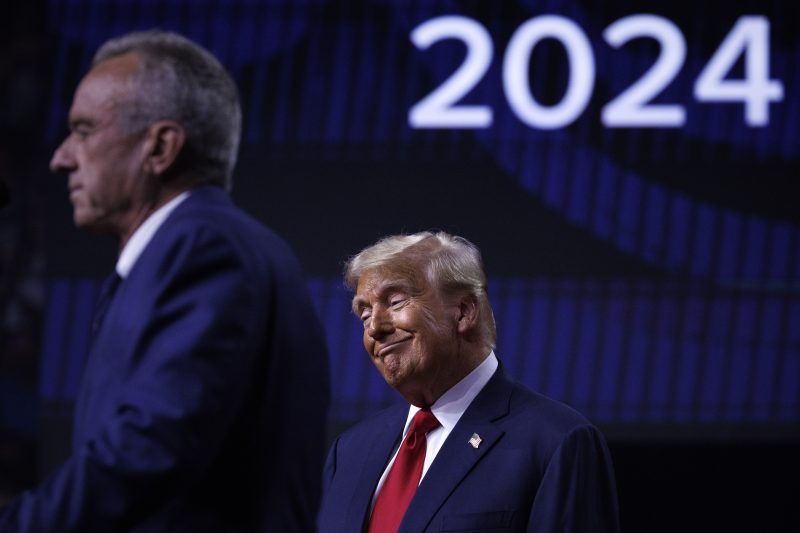Robert F. Kennedy Jr.’s 2024 presidential campaign featured a number of often-bizarre twists and turns. And his exit from the race Friday is coming with yet another. It turns out Kennedy will actually remain on the ballot in three key states: Michigan, North Carolina and Wisconsin.
It’s a headache for Donald Trump, whom Kennedy endorsed and whom Kennedy’s supporters tended to favor more than Vice President Kamala Harris.
But how much impact could it have?
To recap, Kennedy said he would withdraw from 10 ballots in more competitive states, while remaining on ballots he qualified for in red and blue states. The idea was that he would still amass votes — he even pitched a rather nonsensical path to being elected president — without hurting Trump.
But in some states, it was too late.
In both Michigan and Wisconsin, a nominated and qualified candidate can’t be removed from the ballot unless they die. And in North Carolina, the State Board of Elections voted Thursday that it was too late to remove Kennedy’s name; many ballots had already been printed, with absentee ballots set to go out next week.
That’s three of the seven states generally regarded as being the most important.
It’s doubtful Kennedy will take anywhere close to the approximately 4 or 5 percent he was polling at in such states and nationally. But small margins could matter greatly in Michigan (which Trump won by 0.2 percentage points in 2016) and Wisconsin (which Trump carried by 0.8 points in 2016 and President Joe Biden carried by 0.6 points in 2020).
A recent New York Times/Siena College poll showed Kennedy’s supporters favored Trump over Harris, 50-21, in a head-to-head matchup. (The rest supported neither.) The Trump campaign’s polling data showed a similar margin — which it touted when Kennedy suspended his campaign.
So, as a hypothetical, if Kennedy goes on to take 1 percent of the vote in these states and his support breaks down like those polls indicate, it would cost Trump between 0.2 percent and 0.3 percent of the vote against Harris.
That’s similar not just to Trump’s margin in Michigan in 2016, but also to Biden’s margins in Arizona (0.3 percent) and Georgia (0.2 percent) in 2020.
Of course, I’ve just pulled that 1 percent figure out of thin air. Who knows what Kennedy will ultimately get and whether it will break down similarly to the rest of his support? Perhaps Trump-inclined Kennedy backers or Harris-inclined ones will be more likely to vote for a withdrawn candidate (whether as a protest vote or because they don’t know he dropped out).
But there is some — albeit limited — precedent for such candidates drawing small but significant vote totals after dropping out. Perhaps the two best recent comparisons:
In the 2014 Connecticut governor’s race, independent Joe Visconti withdrew two days before Election Day and endorsed the Republican. He was polling between 3 and 8 percent — similar to Kennedy — and ultimately took a little more than 1 percent.
In the 2020 U.S. Senate race in South Carolina, Constitution Party nominee Bill Bledsoe dropped out and endorsed Republican Sen. Lindsey Graham. But Bledsoe wound up getting 1.3 percent of the vote — after Democrats ran ads elevating his name in hopes of diluting Graham’s support.
A few other recent examples:
In the 2018 Alaska governor’s race, independent Gov. Bill Walker withdrew and endorsed the Democrat. Walker wound up taking 2.03 percent. (He was, though, an incumbent many had voted for before.)
In the 2018 special election for Texas’s 27th Congressional District, Republican Bech Bruun withdrew but still took 4.3 percent in a nonpartisan “jungle” primary.
In the 2022 U.S. Senate race in Alaska, Republican Buzz Kelley took 2.13 percent in the first round of the state’s ranked-choice primary and was one of four candidates to qualify for the general election. But despite soon withdrawing, he actually increased his first-choice votes in the general election, to 2.89 percent. (Ranked-choice voting does encourage votes for minor candidates, by allowing people to also vote for other candidates in case their candidate doesn’t win.)
These last three examples aren’t very comparable, including because the final two were run under unusual voting systems. And a presidential race will earn gobs more attention, which will reduce the possibility that people will go to the polls thinking Kennedy is still actually a candidate.
But some might, and he’ll still be an available protest vote for those who might be inclined to back him. And for a Trump campaign that played up how Kennedy’s exit would be a boon, it complicates things.



























